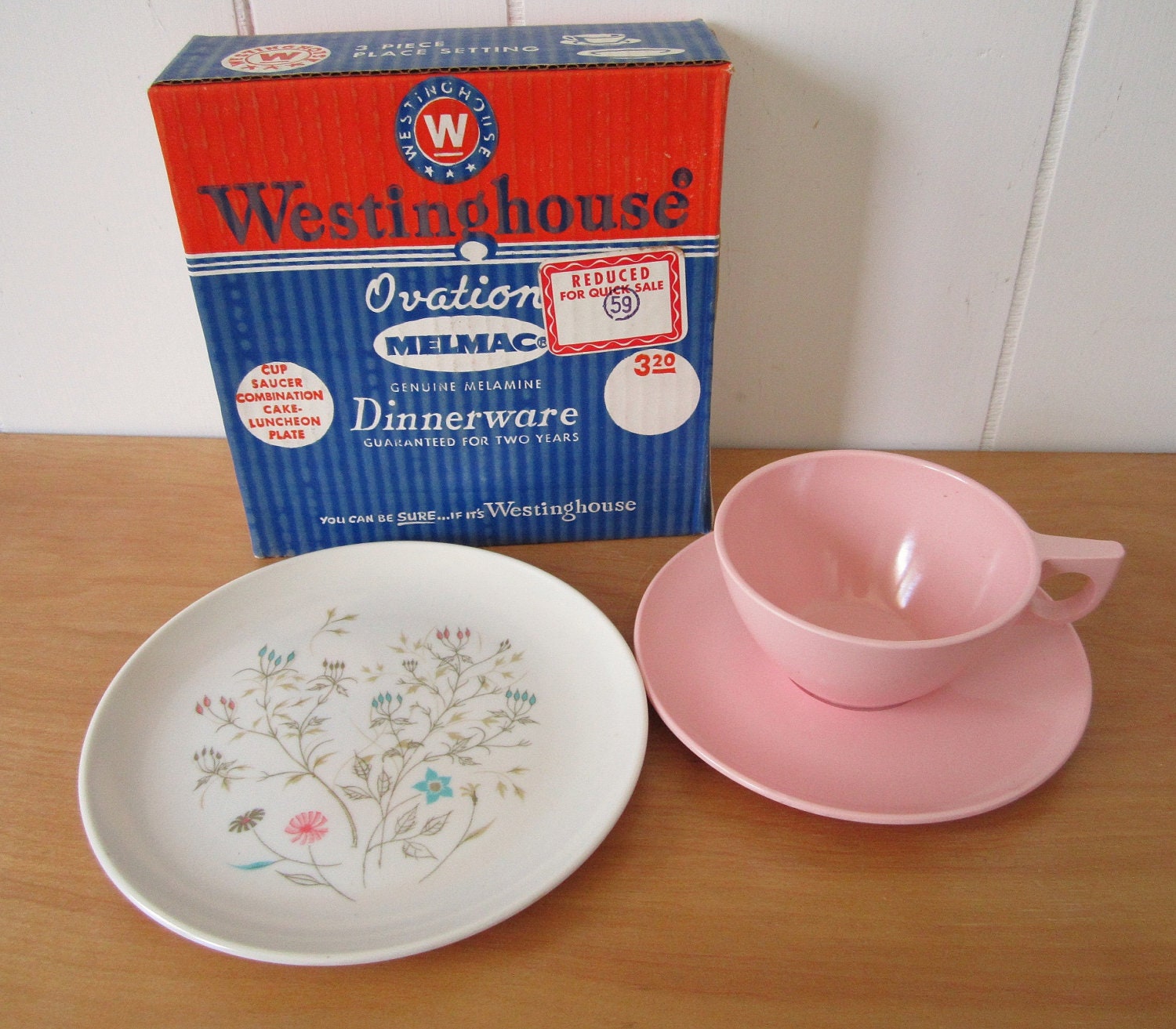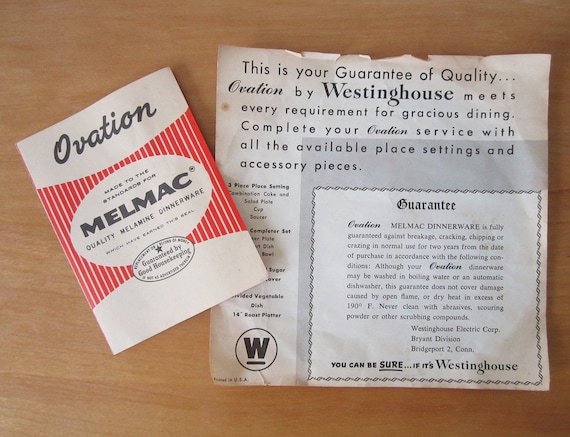 |
| Newport cream and sugar by Westinghouse. Find it at loves2frame. |
Yep, that's right. Westinghouse as in those "appliance folks" that date back to 1886. They acquired the Bryant Electric Company of Bridgeport, Connecticut in 1901. Bryant acquired Hemco plastics in 1928. So, therefore, the whole Westinghouse - Bryant - Hemco - associated thing came to be.
 |
| Oh how cool it would be to mold up your own promo items. These are only $14 at MyRetroStuff. |
The plastics division in Bridgeport was big in 1940's wartime production of helmet liners and economy plastics. On top of that, it made parts for their electrical lines such as housings, switches, and casings. Now add on all the plastic parts for their appliances. They parts would be for their fans, stoves, washers, dryers, dishwashers, freezers, fridges, just about anything you can think of appliance wise coming out of Westinghouse. From a plastic dishwasher rack to a plastic stove knob. So why not dishes? Not that far off right?
 |
| Backstamp Courtesy and pieces available at Loves2Frame on Etsy |
By the 1950's Westinghouse had a good market share for plastic dinnerware between the Westinghouse "Newport" , "Darien" and "Ovation" lines ,among several others. Add that to the fact Hemco, Hemcoware, and Hemcolite were being alternately produced under the Hemco backstamp (these wares ranging from a lightweight picnic ware to heavier melamine pieces.) I do find it odd that Westinghouse's lines were competing with it's own Hemcoware lines but perhaps that's part of their whole marketing tactic. You can see more photos of products
here on my other blog post about Westinghouse.
 |
| Photo: Wikipedia Commons |
My research has led me to a very interesting article published in 1958 by Decker Communications. It appears Westinghouse wanted to sell their melmac in grocery stores. They went to A&P stores ( The Great Atlantic & Pacific Tea Company, Inc., which operates A&P--some may still be in operation today.) With the help of an 8 foot corregated cardboard display unit, also called a "merchandiser", the sets were spot tested in 400+ stores in and around New York City.
Sales hit a million dollars in ten weeks.
That's a lot of dough for plastic dishes, even back then. So it's safe to say I'm giving Westinghouse a pat on the back. I do have to sit and wonder, if that was the case, and they sold so many darn dishes, where the heck did they all go? Sadly most of the Westinghouse marked examples I've seen are on the thin side, and have lots of scratches. I suppose it's safe to say the housewives may have really used them to death.
Did you use Westinghouse? Tell me about it!



